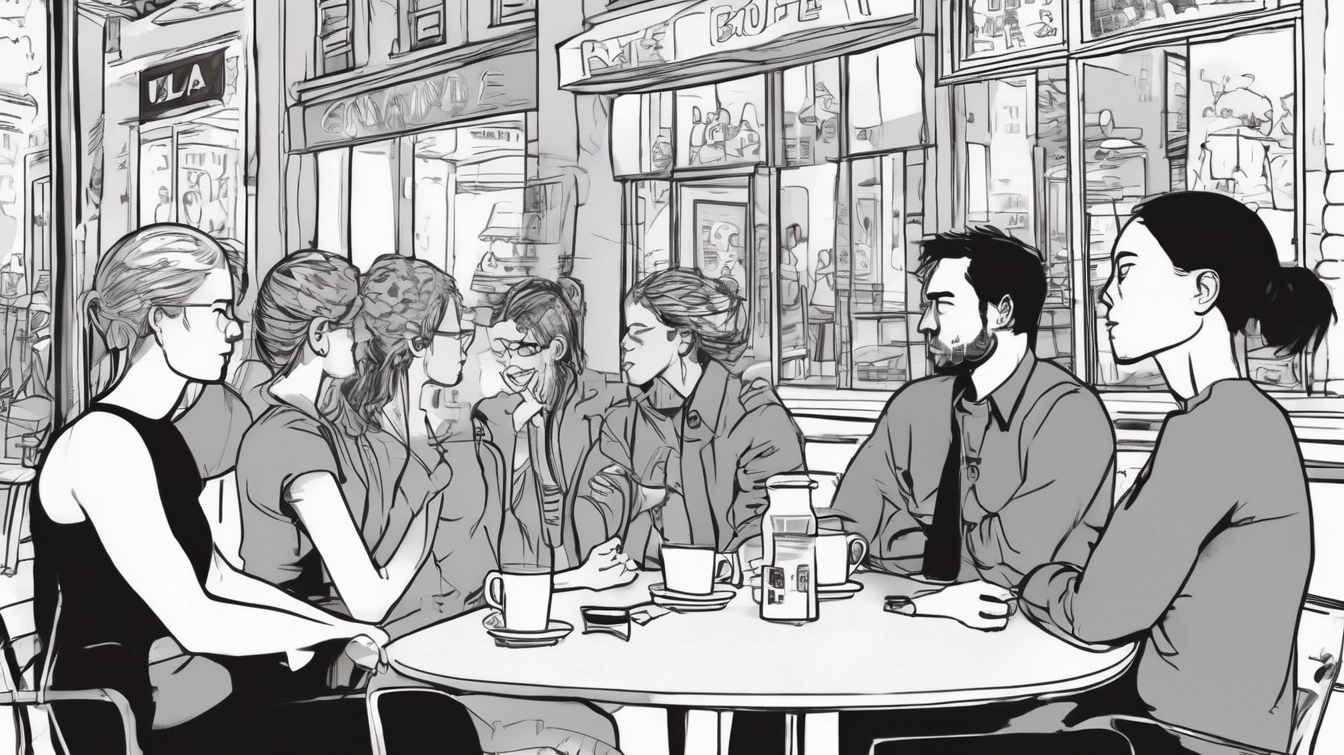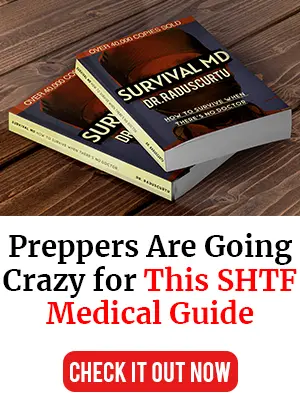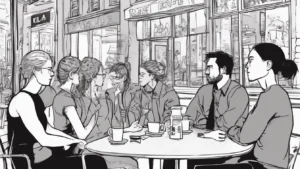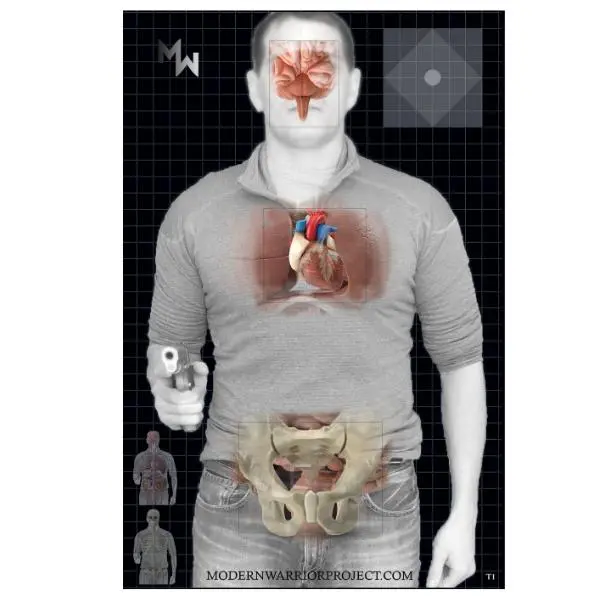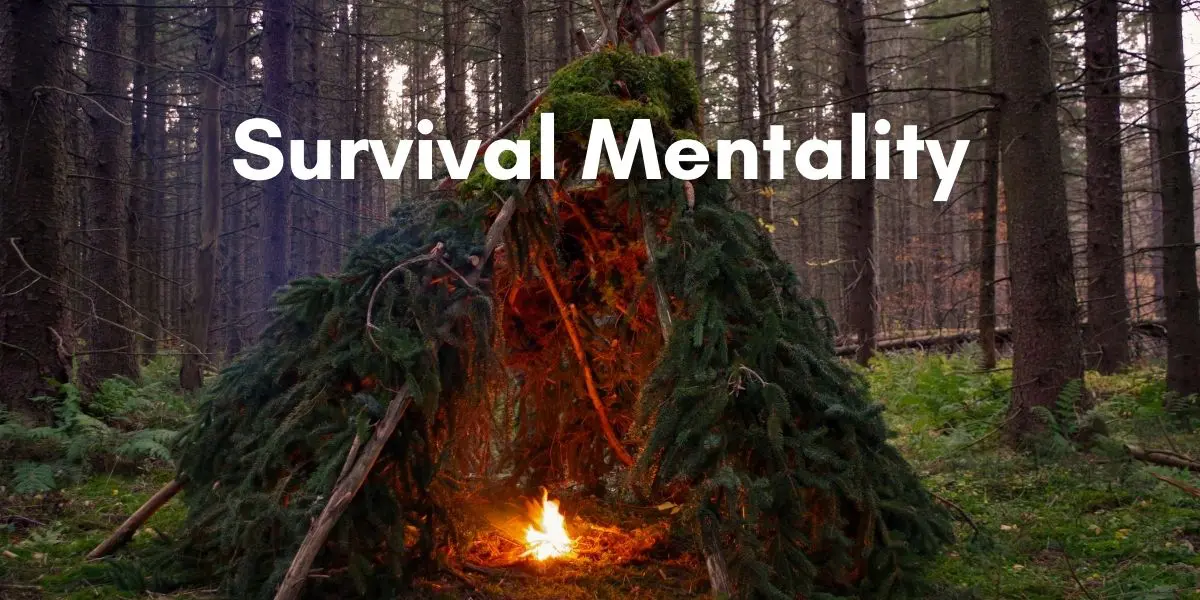Body language myths are important in detecting deception, influencing how we understand nonverbal signals in different situations.
Despite research from the FBI and behavioral experts, there are still widespread misconceptions about body language and detecting deception.
By questioning these myths, we can greatly enhance our skill in accurately understanding and reacting to nonverbal cues.
1. The Crossed Arms Misconception
The image of someone standing with crossed arms instantly triggers the stereotype: defensive, closed-off, or even hostile. This cliché has been weaponized across countless YouTube videos and pop-psychology guides, but it’s a classic case of oversimplification that can mislead and, ironically, put you in danger.
Joe Navarro, a former FBI agent with 25 years of experience reading people, dismantles this myth by revealing that crossed arms often function as a self-soothing behavior—a subconscious “self-hug” people use to find comfort in uncomfortable or crowded environments. It’s not about building walls; it’s about seeking warmth or security when external conditions feel unsettling.
Key points to consider:
- Crossed arms frequently appear in neutral or relaxed settings—waiting for a friend, watching a movie, or simply feeling chilly.
- This posture varies widely due to cultural norms, temperature, and individual habits.
- Interpreting crossed arms without context is like reading a sentence with half the words missing: incomplete and prone to error.
Focus less on the arm position itself and more on what the hands are doing. Hidden hands behind backs or clenched fists indicate real red flags rather than the simplistic “arms crossed = defensiveness” rule. Ignoring these nuances is how tunnel vision blindsides even trained professionals.
Understanding crossed arms as a multi-dimensional signal challenges us to move beyond lazy assumptions and tune into the subtle, context-rich language our bodies actually speak.
2. The Eye Contact Fallacy
Challenging the belief that strong eye contact is universally associated with honesty and trustworthiness, it’s essential to consider the role of cultural norms in shaping our understanding of eye contact in deception detection.
In various cultures, the significance of eye contact differs significantly. While some may perceive strong eye contact as a sign of confidence and truthfulness, others view it as disrespectful or confrontational. This variance highlights the importance of not relying solely on eye contact as a reliable indicator of deception.
Cultural differences play a crucial role in how individuals interpret and display eye contact. For example, in some cultures, avoiding direct eye contact with authority figures is a sign of respect rather than deceit. Understanding these cultural nuances is vital in accurately assessing nonverbal cues during interactions.
By examining how cultural norms influence our perceptions of eye contact, we can develop a more nuanced approach to decoding body language and deception detection. It underscores the need to consider individual differences and societal contexts when evaluating the role of eye contact in communication.
3. Misinterpretation of Body Language Cues
Body language myths often boil down to a single fatal flaw: ignoring baseline behavior. Without knowing how a person usually acts, interpreting their nonverbal signals is like trying to read hieroglyphics without a Rosetta Stone. What looks like suspicious fidgeting might just be someone’s standard operating procedure for staying comfortable. Likewise, what seems like calm composure could be an outlier for an otherwise animated individual.
Key elements to consider:
- Establish baseline: Observe the person in neutral settings before making any judgments. This means noting their typical posture, gestures, pacing, and facial expressions.
- Clusters of behaviors: Avoid putting all your chips on one isolated cue — a twitching eyebrow, a crossed arm, or a fleeting smile can be meaningless on its own but revealing if combined with other changes.
- Behavioral shifts: Sudden deviations from someone’s norm carry more weight than fixed “tells.” A usually talkative person going silent or someone usually still suddenly fidgeting is more telling than any universal body language rule.
Ignoring these principles leads many down the rabbit hole of misinterpretation, where YouTube experts confidently declare lies based on a single gesture while missing the bigger picture. Real expertise requires patience and attentiveness to behavioral patterns—not quick judgments from cherry-picked clips.
The challenge: body language is an evolving script written by context and personality, not a simple checklist of deceptive moves.
4. Understanding Threat Identification Through Body Language
When it comes to threat assessment through body language, certain cues can be indicative of potential danger. Clenched fists and hidden hands are two key signals that security professionals and individuals should be vigilant about.
It’s crucial to exercise caution and consider the context when interpreting body language signals related to threats. While clenched fists can suggest aggression or stress, hidden hands could potentially conceal a weapon. Understanding the nuances and being aware of the surroundings play a critical role in accurate threat identification.
By being attuned to these subtle cues and approaching threat assessment with a blend of vigilance and contextual understanding, individuals can better navigate situations where nonverbal communication may hint at underlying risks without falling prey to misinterpretations or oversimplifications.
5. Enhancing Deception Detection Skills with Nuanced Approaches
Exploring advanced techniques for improving our ability to detect deception through body language analysis:
- Observing behavioral patterns: Instead of focusing on single gestures, it is crucial to observe the individual’s consistent behavioral patterns over time. By establishing a baseline of how someone normally behaves, deviations from this baseline become more significant indicators of potential deception.
- Recognizing meaningful deviations: Paying attention to sudden changes in behavior, especially during specific topics or situations, can provide valuable insights into someone’s truthfulness. These shifts in body language, when combined with other cues, offer a more accurate assessment of deception.
Highlighting the importance of considering clusters of behaviors rather than relying on single indicators:
- Clusters of behaviors: Instead of isolating one gesture or expression, look for clusters of behaviors that align or contradict each other. When multiple signals point in the same direction, the accuracy of deception detection improves significantly.
- Contextual awareness: Understanding that body language is nuanced and influenced by various factors such as cultural differences, personal habits, and environmental conditions is essential. Context plays a crucial role in interpreting nonverbal cues accurately.
Practical Applications and Recommendations for Effective Communication Through Body Language
- Context Awareness: Understanding the nuances of body language beyond common myths allows us to interpret nonverbal cues more accurately. By considering the context in which gestures occur, we can avoid misjudgments and enhance our communication skills.
- Listening Skills: Paying attention to clusters of behaviors rather than isolated cues can significantly improve our ability to detect deception. Actively listening to both verbal and nonverbal signals during interactions helps in gaining a more comprehensive understanding of a person’s intentions.
- Body Language Myths: By debunking prevalent misconceptions about body language, we become more adept at reading people authentically. This awareness not only aids in deciphering others’ emotions and intentions but also enables us to communicate more effectively in various social settings.
Here is one on my read list. It seems like it may be an interesting choice.
Further Reading: The Dictionary of Body Language
If you want to dive deeper into the world of nonverbal cues and debunk more body language myths, The Dictionary of Body Language is your go-to guide. This book offers a thorough exploration of gestures, postures, and expressions—providing context and nuances that go far beyond simple stereotypes. Perfect for anyone serious about understanding what people really mean without words, it equips you with the tools to read behavior with a critical eye instead of falling for oversimplified rules.
- Comprehensive resource on nonverbal communication
- Explains subtle signals often missed or misunderstood
- Ideal for enhancing deception detection and everyday interactions
Grab your copy here and start questioning what you think you know about body language.

